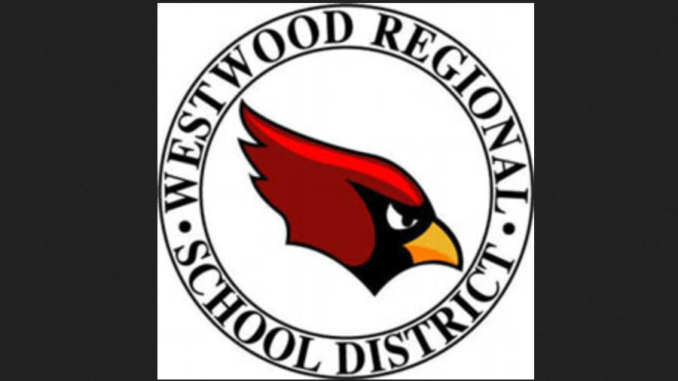
TOWNSHIP OF WASHINGTON, N.J.—The Westwood Regional School District Board of Education has introduced a preliminary 2021–2022 budget of more than $65 million with a proposed zero percent tax levy increase.
Board Business Administrator Keith Rosado said a zero tax levy increase budget was a first during his tenure in the district, and credited it for the most part to 2020 savings during the pandemic.
The introduction was made some three hours into a nearly six-hour board meeting on March 18.
A final budget discussion, public hearing and vote is scheduled April 29. According to the board’s agenda, the preliminary budget is $65,419,205 and the local tax levy is $56,774,194.
The preliminary budget was approved, 8–1, with Westwood trustee Michael Pontillo, who sits on the Finance and Facilities Committee, voting no.
We reached out to Rosado and Finance and Facilities Committee Chairman Andrew Gerstmayr on further budget breakdowns and projected school tax on average district homes in Westwood and Washington Township but did not hear back by press time.
The draft budget was discussed at the March 4 board meeting, which itself exceeded five hours. On March 18, only Pontillo spoke on the measure. He said he’d asked a lot of budget questions March 4 and did not feel he’d received a lot of answers. He said he had “trouble wrapping my head around this,” referring to the $65 million budget.
He questioned why he had to ask about funds being moved from capital reserves to help pay for 2021–2022 priorities and wondered why trustees were not provided draft budgets that showed a one or two percent decrease in tax levy, in addition to the zero tax levy increase budget.
“I’m a little troubled by the way this process went,” said Pontillo, noting the budget was discussed but many questions remained. “Have we really done our best on this or could we do better?” he asked of trustees. About six minutes was devoted to its introduction.
On March 4, the board spent nearly five hours discussing budget possibilities, with much focus on costs for fully restarting schools in September, including how to fund extra teachers, provide extra classroom space, and address class size and crowding concerns.
While Rosado said some changes could possibly be made given flexibility in the proposed budget, others might not be easily accommodated, such as hiring of teachers and finding additional classroom space.
Following a budget overview by Superintendent Ray González, Rosado said about $1,250,000 was saved during 2020 due to fewer classroom aides returning and reduced hours for aides, and savings on state-administered health benefits.
Rosado said the $1.25 million savings would have equaled a 2.25% tax increase. “The budget is still increasing but we’re able to offset that by utilizing the savings.”
Rosado noted the “one-time” saving due to Covid-related impacts was not a continuing solution to help reduce future budget increases.
Rosado told trustees the budget was “advisory, consultative and deliberative” and not to be shared publicly until finalized.
He said in 2021 the district received an increase in state aid of $407,521, but warned that last year the district saw and increase in state aid and then a decrease. He said they should know by July how much state aid will be coming. He said the district must maintain a balanced budget, where revenues equal expenditures.
Throughout the hours-long March 4 budget discussion—at times unwieldy, detail-filled and riddled with financial jargon—the nine trustees homed in what it would take to successfully reopen schools in September, plan for contingency costs, and make that happen.
Pontillo asked about total district debt and annual interest costs; he was told annual debt service costs are approximately $606,000, paid in semiannual payments.
Much debt was from two previous bond referendums, for middle-school renovations and upgrades approved by voters in 2017 and a 2011 school bond that provided funds to upgrade roofs, boilers and parking lots, Rosado said.
He said the 2018 middle school bond would be paid off in 2039 and the 2011 bond in 2031.
Pontillo asked March 4 for González to prepare a report describing “multiple tracks” or strategies for returning students full-time to classrooms as well as an analysis of what is ultimately needed for returning students, teachers and staff.
Trustee Michelle Sembler suggested that maybe funds can be found in the budget for resources required to bring students back to classrooms, including additional teachers. Trustee Stacey Price wondered if funds could pay for needed temporary trailers for Rosado said trailers’ purchase costs would need to be funded by capital reserve and trailer rentals from the operating budget.
González said so far no state guidance has been issued on how districts should return to class in September.
District schools are operating on a hybrid schedule due to high Covid-19 transmission rates in Bergen County, as reported by the state’s CALI (Covid Activity Level Index) activity level. The level has remained “high” over consecutive weeks since October.
Trustee Frank Romano asked Rosado whether the district could prepare for a worse-case scenario in terms of costs for reopening schools and Gerstmayr asked if part of the $1.25 million in 2020 savings could be held back “for what we might need” to restart schools in the fall.
Pontillo suggested that Rosado might assist trustees by flagging certain budget items as wants and other items as needs to help them set funding priorities.
Responding to a question on possibly hiring up to six more teachers for fall, Rosado said that at the lowest pay scale, with benefits and other costs, that would total $400,000 to $500,000.
